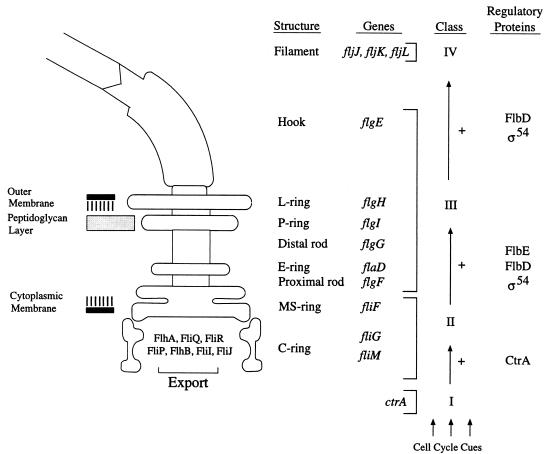FIG. 1.
Diagram of the C. crescentus flagellum. The name of each structure is accompanied by its gene designation(s). The structure of the C-ring complex is adapted from that proposed for the Salmonella typhimurium basal body (18). The genes encoding structural proteins are grouped into one of the three known flagellar gene classes (II, III, and IV), which together comprise the flagellar regulatory hierarchy (6, 8, 34, 55). Arrows indicate positive regulation (+) in which the transcription of genes within a class requires the expression of the gene products of the preceding class. The regulatory cascade is initiated by the class I gene product, CtrA, in response to as yet unidentified cell cycle cues (39). Class II gene products include proteins comprising early structural components of the flagellum (FliF), proteins which function in the flagellum-specific export pathway, and the transcription factors FlbD and RpoN (ς54). FlbE is the cognate histidine kinase for FlbD (50).

